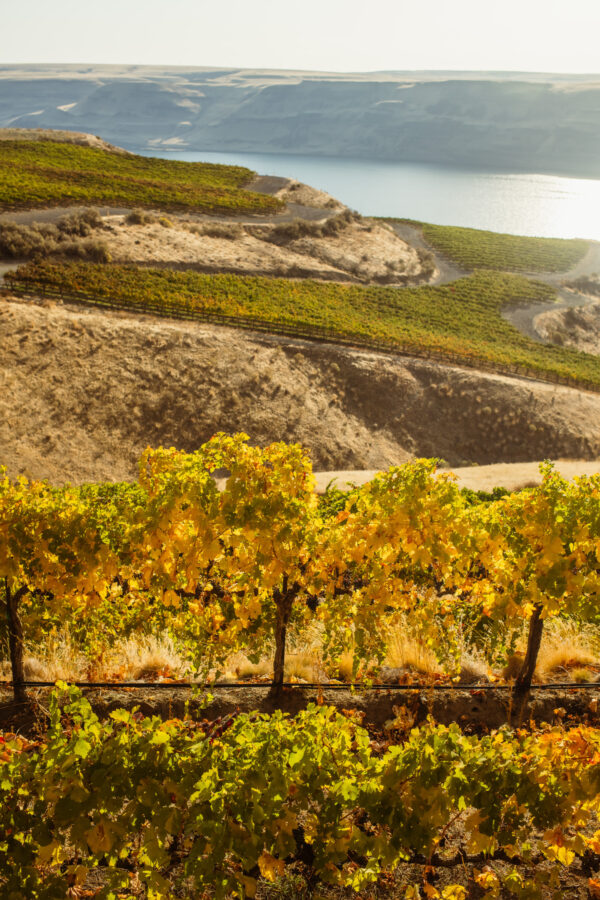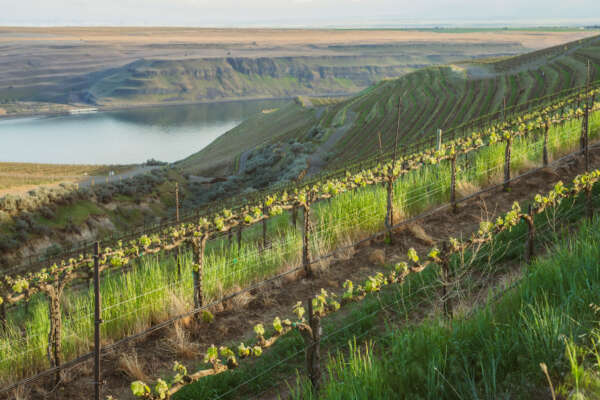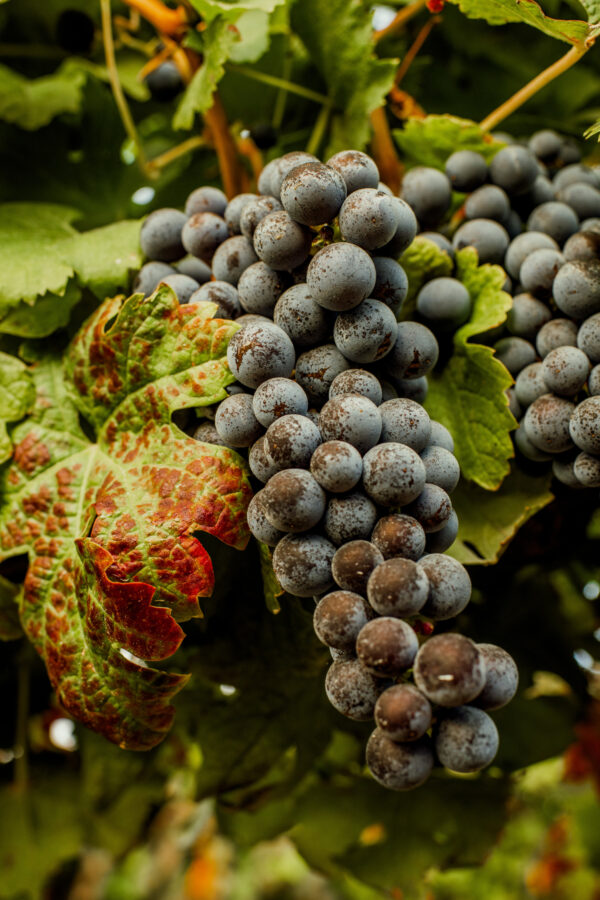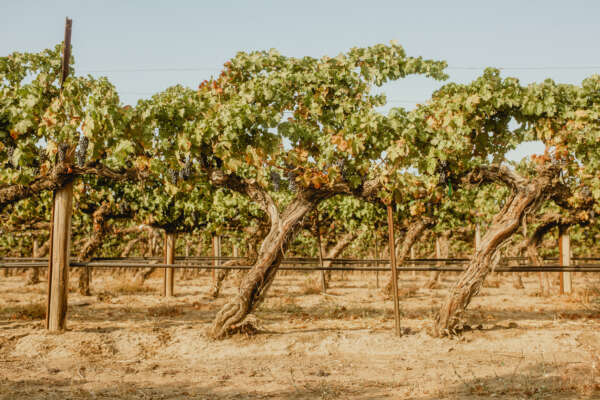Horse Heaven Hills
They say that wine tastes better when grapes have a view. Indeed, the Horse Heaven Hills AVA is also Cabernet Sauvignon heaven, with south-facing slopes, warm temperatures and extended sun exposure. It is home to over 27% of Washington State’s planted acreage, mostly planted to Cabernet Sauvignon. This arid to semi-arid area is visually stunning with sweeping views of the Columbia River below. It is located on an anticline of the Yakima fold belt (a series of wrinkles in the earth that create slopes ideal for grape growing). With limited precipitation (up to 9”), irrigation is required to grow wine grapes. Strong winds in this AVA, provide thicker grape skins, adding concentration to the wines from which they are made. The nearby Columbia River moderates temperatures, reducing any risk of frost, which can be a problem in nearby areas.
The well-drained soils in this area include wind-blown sand and loess, Missoula Flood sediment, and rubble from the Columbia River basalt bedrock. The Horse Heaven Hills had its first vinifera plantings in 1972. Wines from this spectacular AVA tend to be well-regarded, highly rated and full of texture.
AVA Information
- Designated
- 2005
- Vineyards
- 17,082 acres (6,912 hectares)
- Top Varieties
- Cabernet Sauvignon, Cabernet Franc, Merlot, Sauvignon Blanc
- Average Annual Precipitation
- 9 inches
- Soil
- wind-blown sand, loess, Missoula Flood sediment, basalt bedrock
- Average Vine Age
- 25yrs
"Thinking on the juxtaposition between some sites in the Horse Heaven Hills, there are distinct locations that show the diversity that the AVA boasts. From the visually dynamic Wallula Vineyard, which sits directly on the Columbia River and garners the benefits of the insulation provided by the immense body of water, to the stunning rolling hills of Phinny Hill further inland that sit at higher elevations and have far cooler evenings and generally less heat. Wallula’s warmer afternoons and evenings can be attributed to the sun radiating off of the cliffs well into the nights, leading to very rich wines and earlier ripening in comparison to its inland counterparts. At Phinny Hill, we often choose later picking dates to bring out the overall dark fruit expressions and polished tannins we have come to know and love. Both of these sites show beautiful texture and intense dark fruits, and have their own distinct character at the blending table,” says winemaker Jesse Schmidt.

During frost events, in vineyards just a few miles from each other, we have measured 17*F and also 40*F at the same time. The contrast and diversity of this AVA make it difficult to describe in abstraction from its common representations.
The long-term average of growing degree days in this AVA is just slightly less than the Red Mountain AVA, meaning that there is plenty of heat units and ripening potential. Many of our premium vineyards, just off of the Columbia River and up on the plateau, are planted in cooler pockets adjacent to canyons. This combination means the vines break dormancy just a bit later than their counterparts, offering some protection from late Spring frosts.

These sites invite moderating wind through the landscape on the hottest days and provide a lower point in the canyons for late frosts to sink to during harvest. The net effect is an extremely long, pleasant, growing season with the consistent ripening benefits of a hot region and also the elegance often expressed from more temperate sites. Bordeaux reds from this area are red and black fruit driven, floral, supple, and concentrated. These wines make exceptional blending components and also create complex and complete wines on their own. A place of beautiful contradiction.

Alex Stewart concludes, "the wines made from grapes closer to the Columbia River corridor are intensely structured while higher elevation spots tend to be more finessed and balanced, with effusive red and blue fruit, polished tannin, and perfumed aromatics. They have the providence to stand alone, yet, when used as a blending tool, they provide lift and elegance.

He goes on to say, “the most notable feature of the Horse Heaven Hills is not the landscape or the fruit, but the people that have taken root and established vineyards. There is a common characteristic that transcends industry and appeals to human nature; they are warm, friendly, and generous. Perhaps an alliterative 4th H should be added to the Horse Heaven Hills to denote the Hospitality that radiates from everywhere. The very same care and tenderness the farmers show for people is provided to their vines, producing some of the finest fruit in the state. It is a divine experience to taste a wine from Horse Heaven Hills for the first time."











